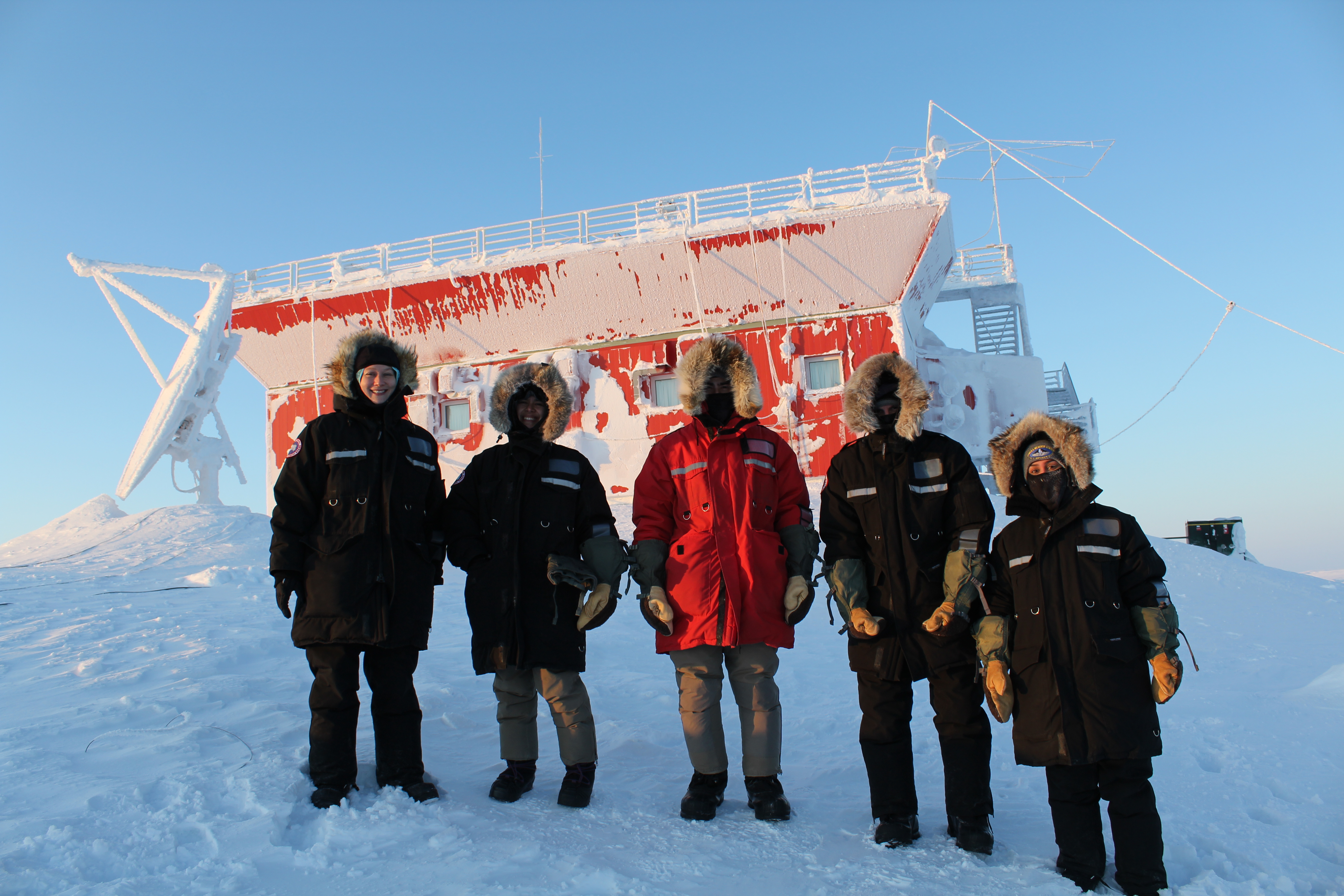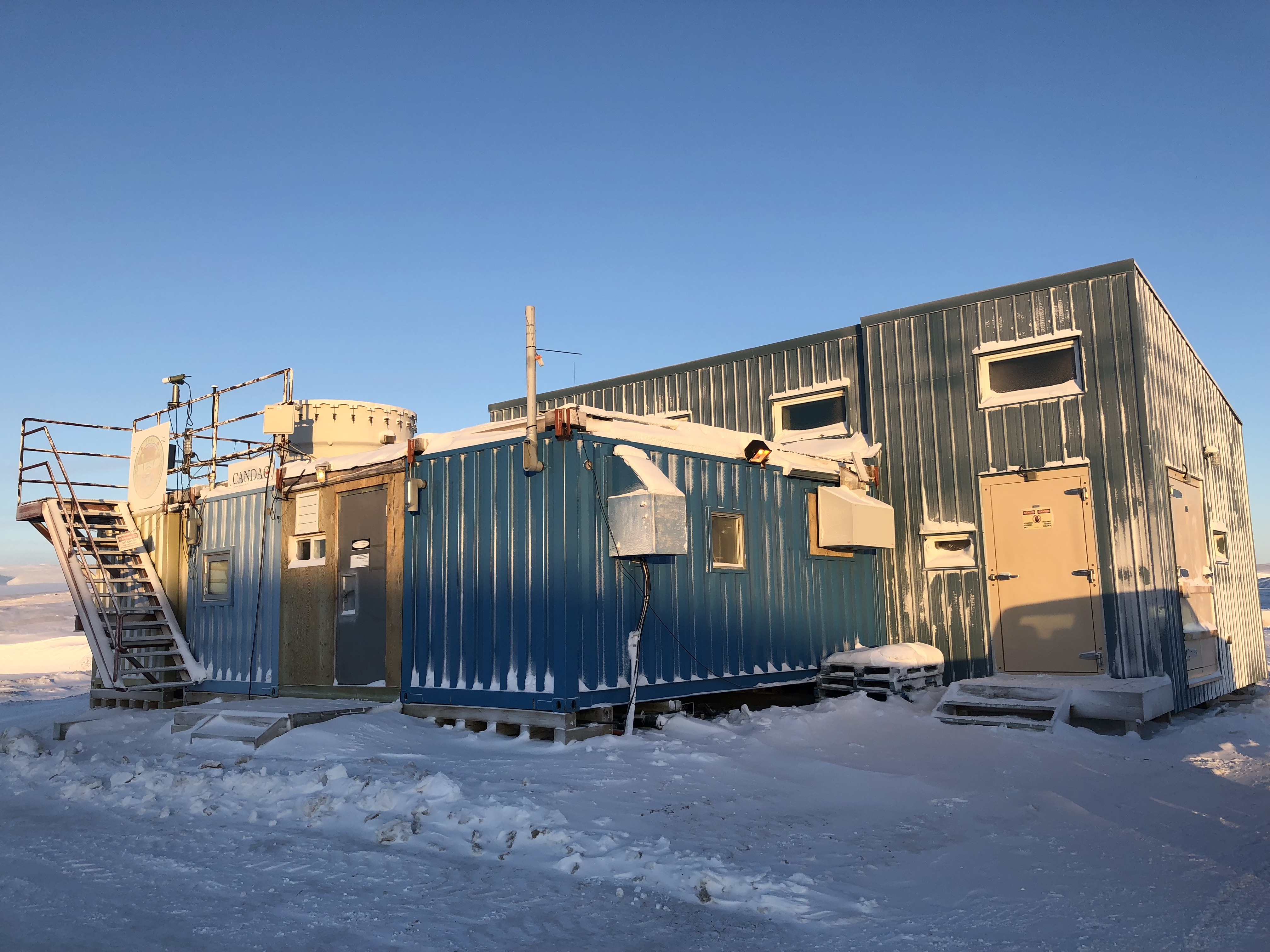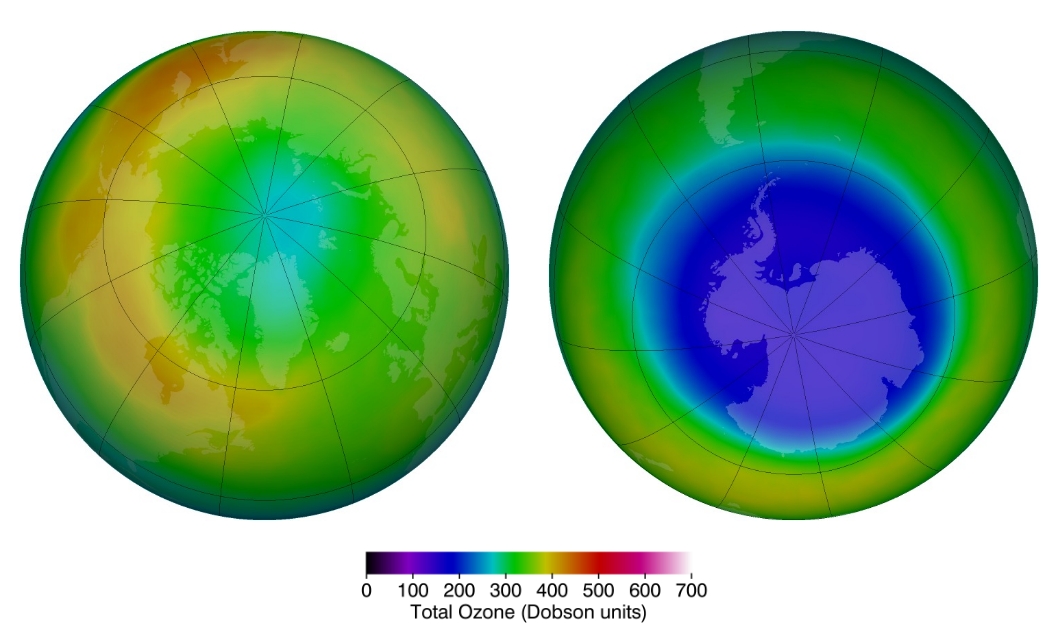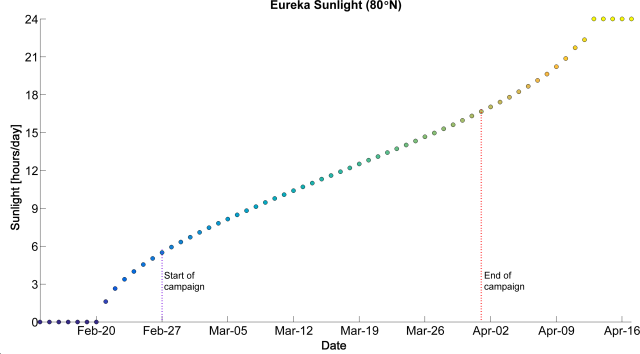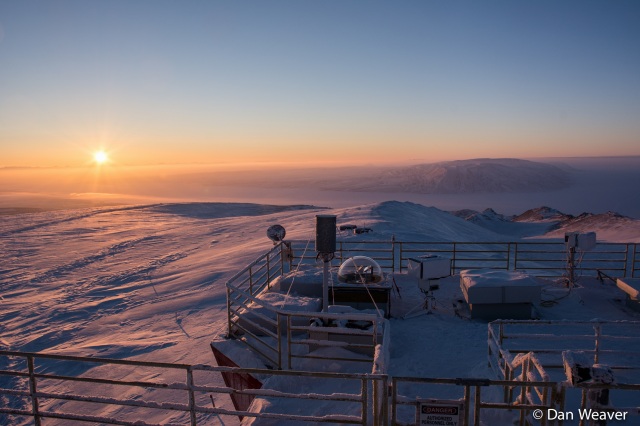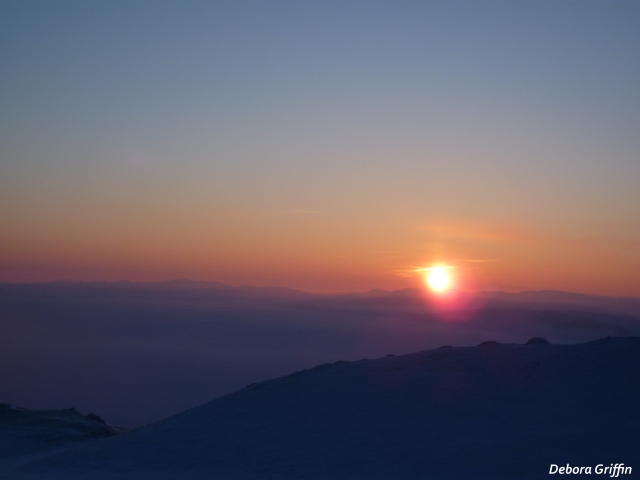Author: Tyler Wizenberg, PhD Candidate, University of Toronto
The high Arctic is often viewed as a pristine, untouched wilderness, far away from human influence. However, in reality this is not always the case and large-scale atmospheric circulation patterns can enable both human-emitted and natural pollution to be swept-up and carried far north. One common form of this transported pollution is the smoke plumes generated by large wildfires at southerly latitudes. These smoke plumes typically contain a wide variety of reactive trace-gases which are photochemically and radiatively active, and which can potentially influence the Arctic climate and environment. Because of this, it is important that we identify, monitor and study these wildfire events as they pass over the high Arctic.

Zeppelin station at Ny-Ålesund on Svalbard, Norway during clear conditions (left), and during hazy conditions caused by transported pollution from agricultural fires in Eastern Europe in May 2006 [1].
To measure these wildfire smoke plumes, scientists employ a wide range of tools, the most common of which are: in-situ measurements (i.e. instruments which draw in the surrounding air and chemically analyze the constituents), ground-based remote sensing instruments (i.e. instruments that look upwards and which measure the emitted, absorbed or reflected light passing through the atmosphere), and satellite-borne remote-sensing instruments (similar to the ground-based instruments, but which look downwards towards the Earth or horizontally towards the Earth’s horizon). In the Arctic, we typically rely on the latter two forms of observations since in-situ measurements often must be made close to (and down-wind from) the fire source, and work best when there are many in-situ observation points surrounding the fire.
At the Polar Environment Atmospheric Research Laboratory (PEARL) in Eureka, NU (80.05°N, 86.42°W), we have a Bruker IFS 125HR high-resolution Fourier-transform infrared (FTIR) spectrometer which can measure a broad range of trace-gases that can be detected in the mid and near-infrared wavelengths. This instrument is a powerful tool for identifying wildfire pollution events, and quantifying the magnitude of the pollution relative to normal levels. The Bruker 125HR has been making measurements at PEARL since 2006. This long data record can even allow us to look back and identify past wildfire events which had previously gone unnoticed. Complementing our ground-based measurements are satellites in polar and high-inclination orbits that frequently measure near PEARL, including the Atmospheric Chemistry Experiment (ACE). Accordingly, PEARL is situated at an ideal latitude for validating satellite measurements.
So how do we identify these wildfire pollution events?
In order for us to identify these wildfire smoke plumes in our ground-based FTIR data record, we make use of what can be called “fire tracing species”. An ideal fire tracing species is one which is emitted in large quantities during a forest fire, and which remains in the atmosphere long enough to allow it to be transported up to the high Arctic. Examples of these are carbon monoxide (CO), hydrogen cyanide (HCN) and ethane (C2H6), all of which are typically emitted in significant quantities during a wildfire.
When we observe simultaneous unusually large spikes (or “enhancements”) in these species above their usual levels, it provides strong evidence that we are making measurements within a smoke plume. Over the course of our 2006-2020 data record, we have observed the pollution from multiple fires, including Russian fires in 2008 and 2010, as well as from the Northwest territories fires in 2014. However, these earlier fire events are dwarfed by one that we measured in August 2017. This particular pollution event was the focus of a 2019 publication by one of our team’s former members, Erik Lutsch.

Enhancements of carbon monoxide, ethane, hydrogen cyanide and ammonia (NH3) observed in August 2017 by the PEARL Bruker 125HR. The average yearly trend is given by the black lines [2].
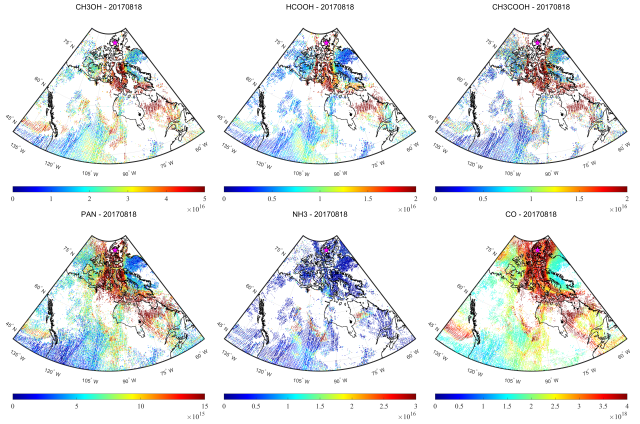
Enhancements in several fire tracing species as seen by the Infrared Atmospheric Sounding Interferometer (IASI) satellite instruments on August 18, 2017 over the Canadian high Arctic. The location of PEARL is marked by a small purple star. Figure courtesy of Bruno Franco, ULibre, Belgium.
In addition to this, through his work Erik established that wildfires can be a substantial source of ammonia to the high Arctic during the summer months. The Arctic has very few natural sources of ammonia (primarily just emissions from the guano of large seabird colonies), so a significant influx of reactive nitrogen in the form of wildfire ammonia pollution can have drastic effects on the sensitive high Arctic ecosystem.
For more details on this exciting new research, feel free to have a look at Erik’s publication on this work.
References
[1] Law, K. S., & Stohl, A. (2007). Arctic Air Pollution: Origins and Impacts. Science, 315(5818), 1537-1540. doi:10.1126/science.1137695
[2] Lutsch, E., Strong, K., Jones, D. B., Ortega, I., Hannigan, J. W., Dammers, E., . . . Fisher, J. A. (2019). Unprecedented Atmospheric Ammonia Concentrations Detected in the High Arctic From the 2017 Canadian Wildfires. Journal of Geophysical Research: Atmospheres, 124(14), 8178-8202. doi:10.1029/2019jd030419





